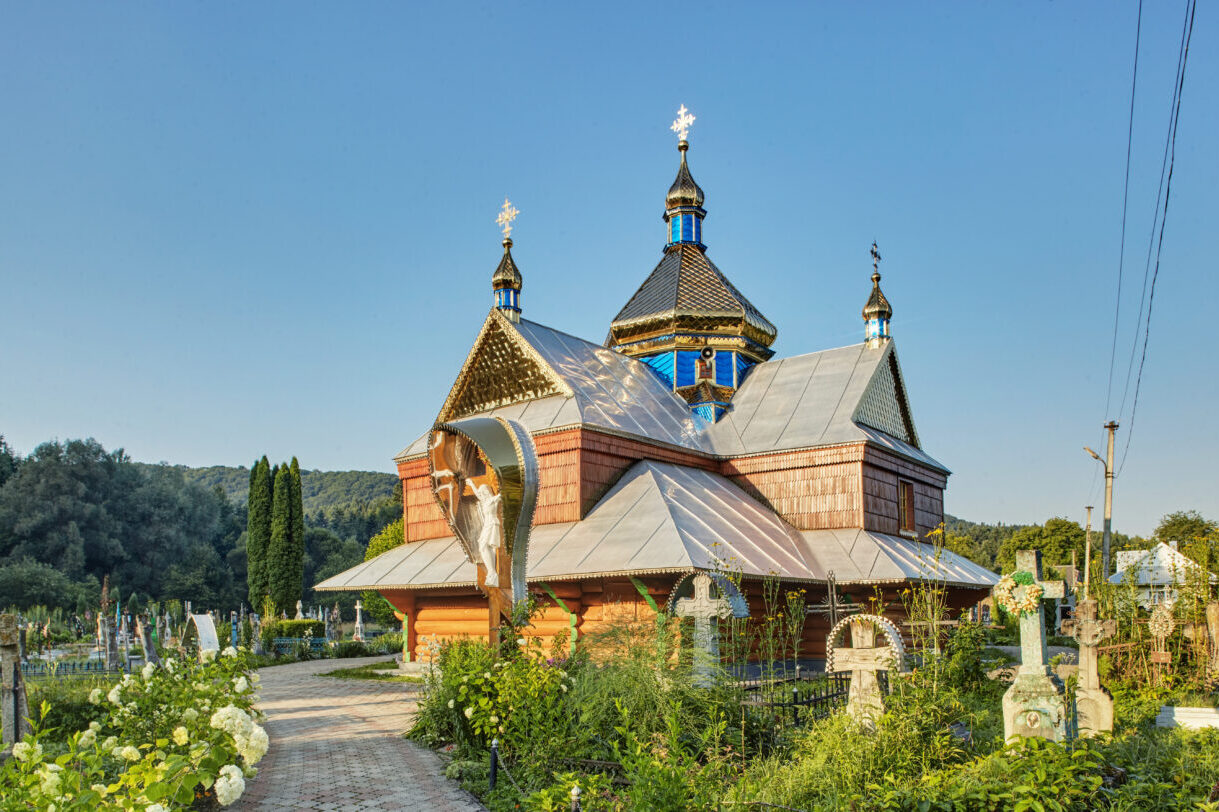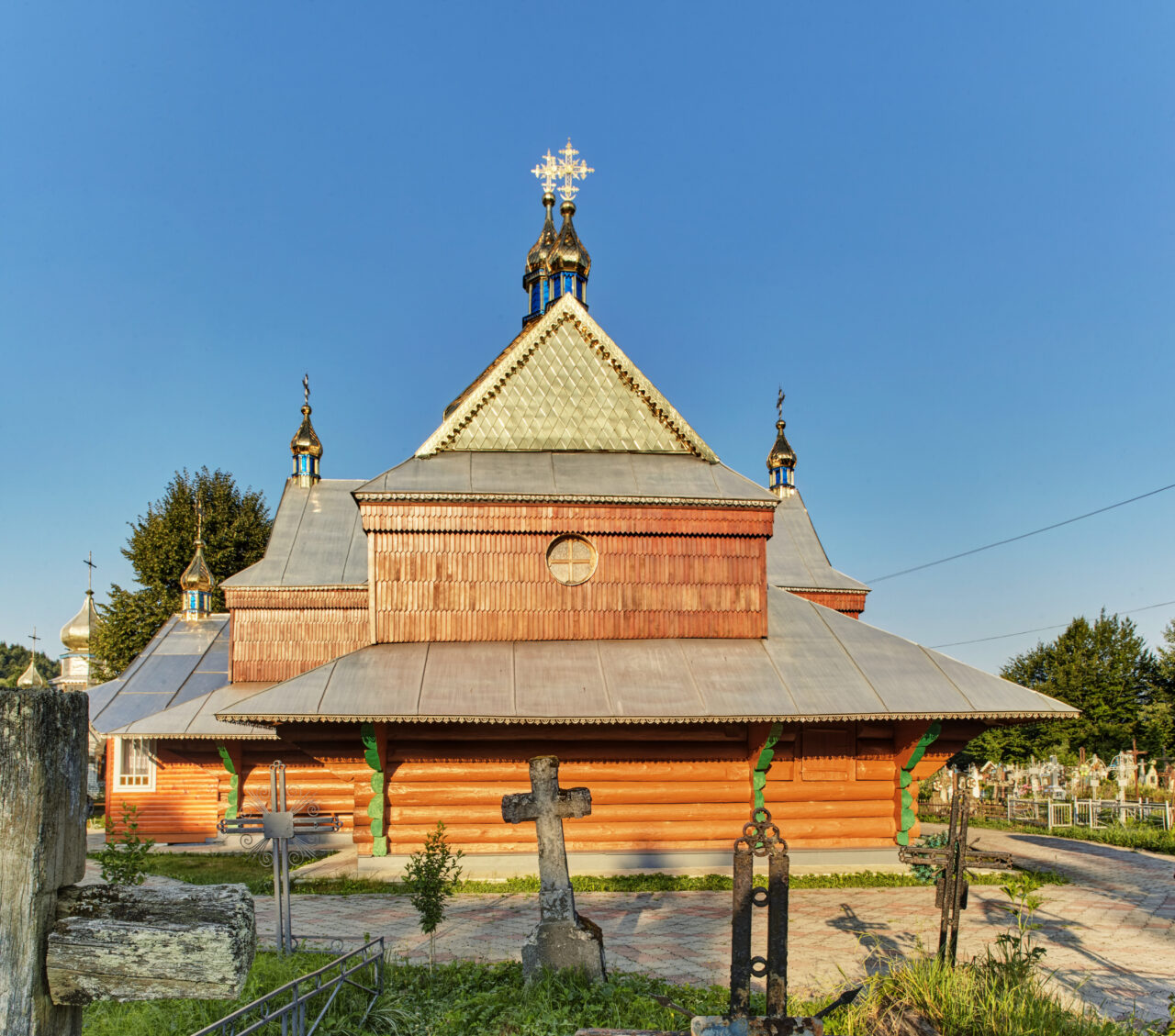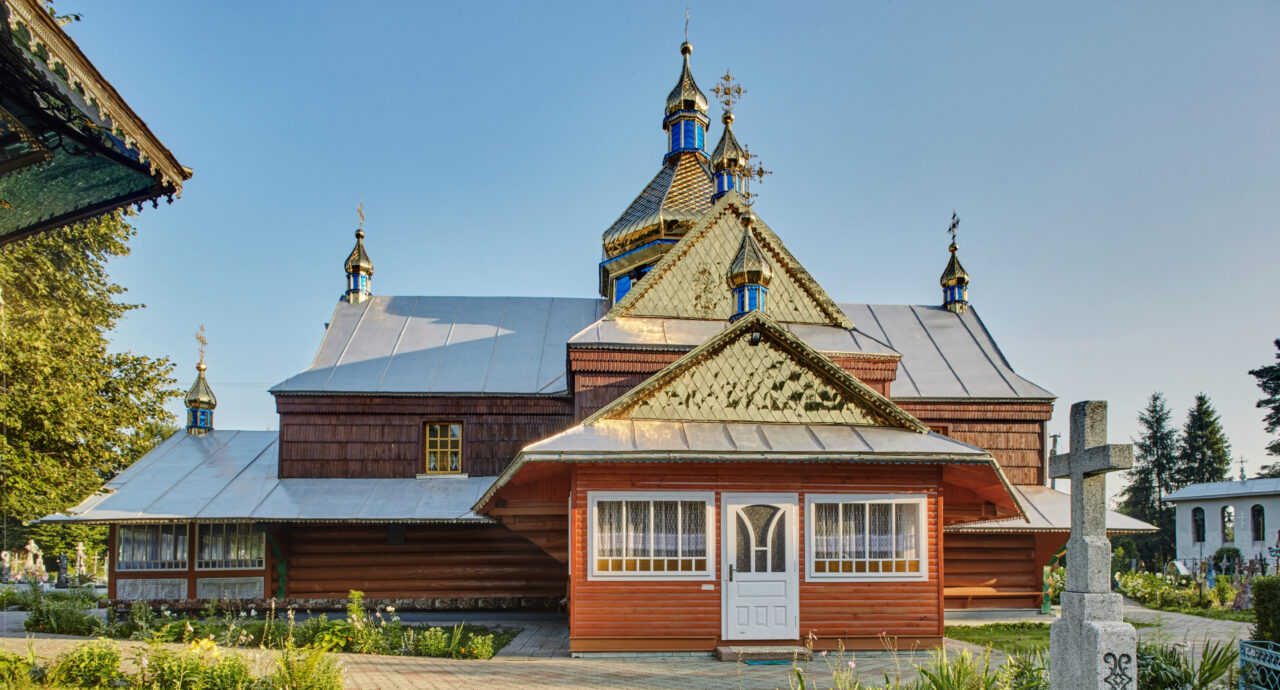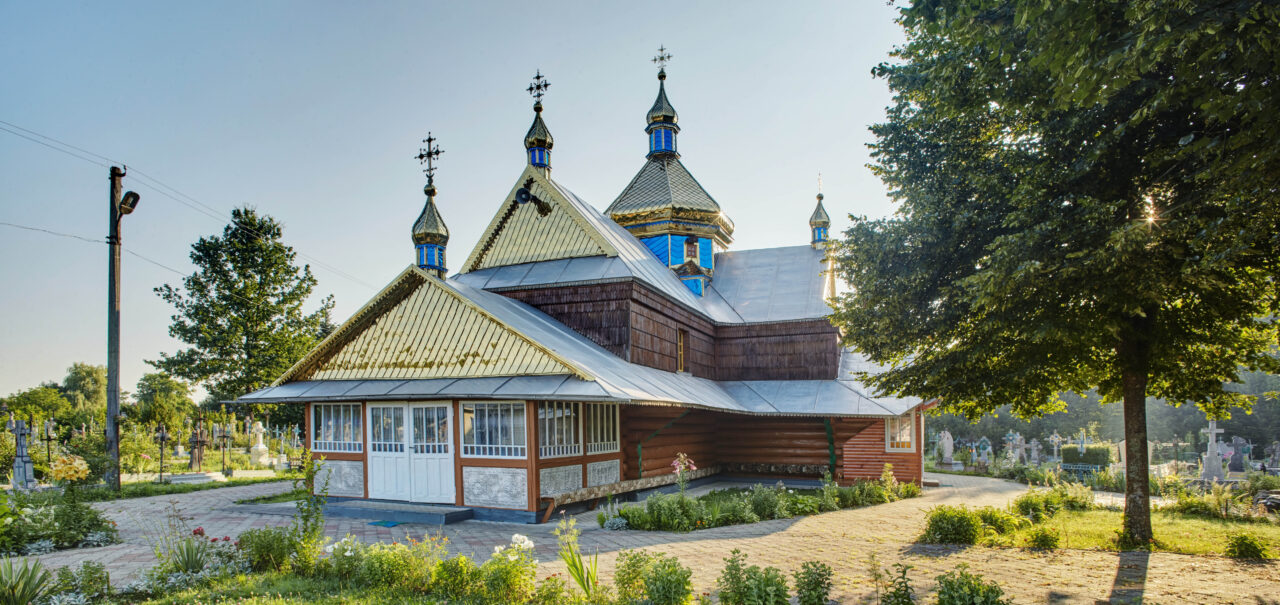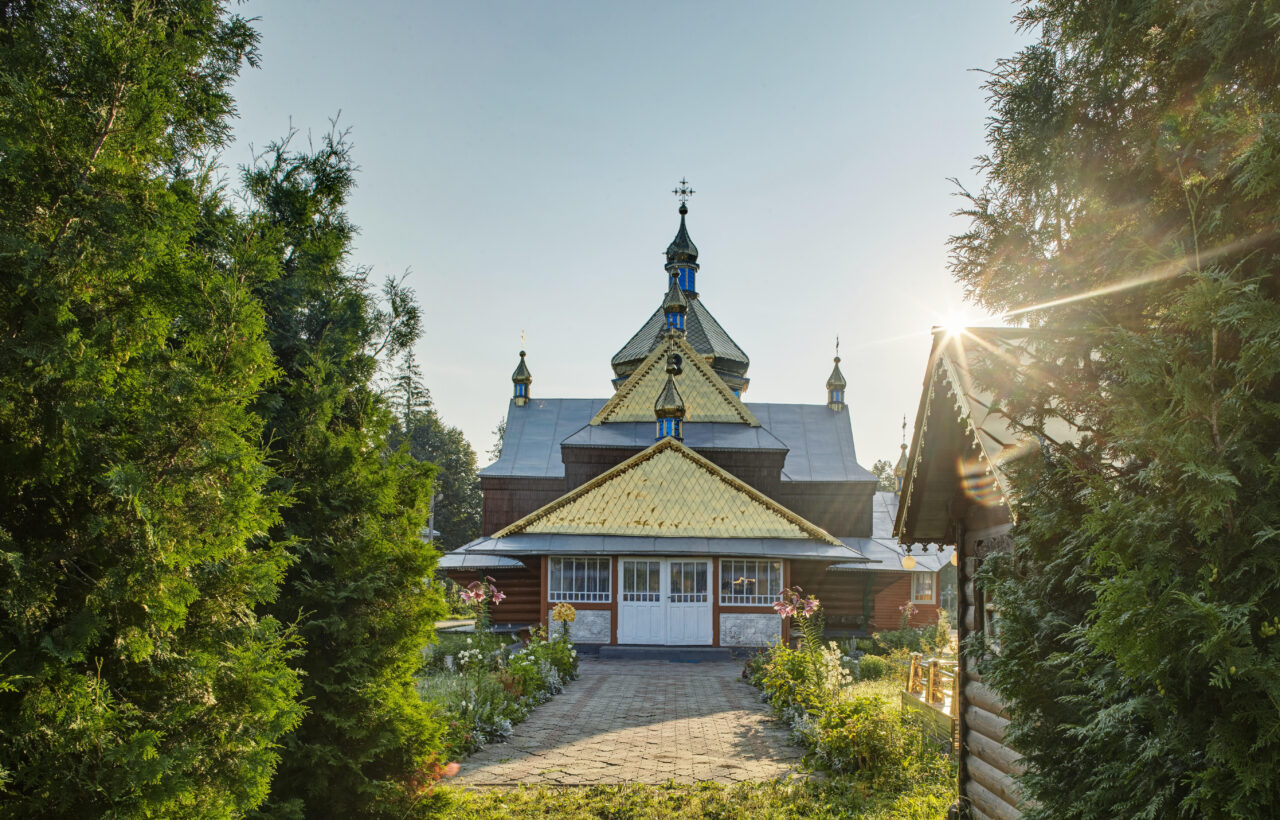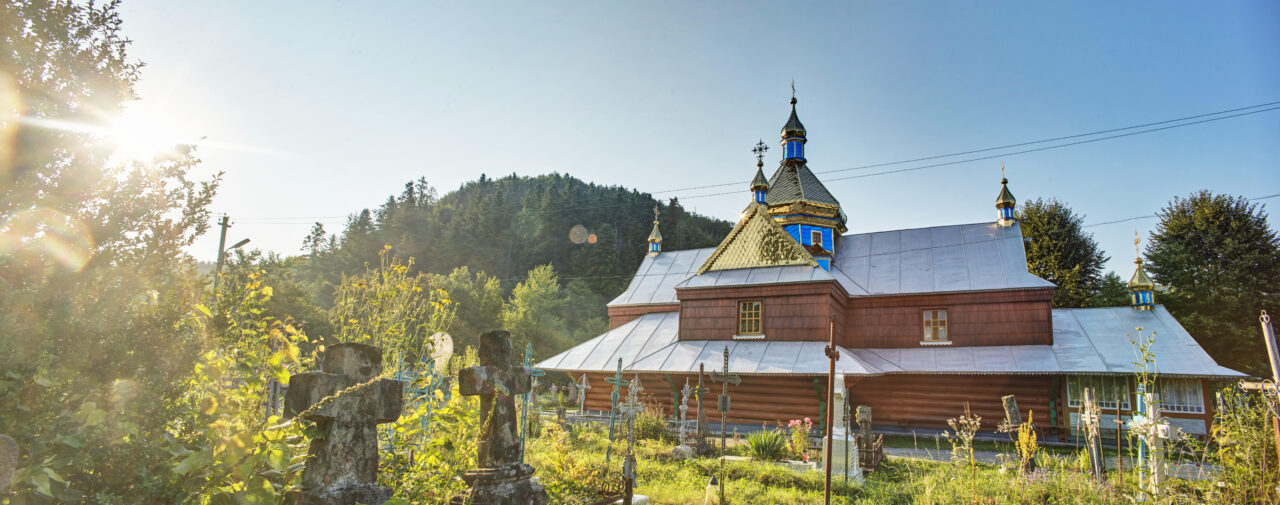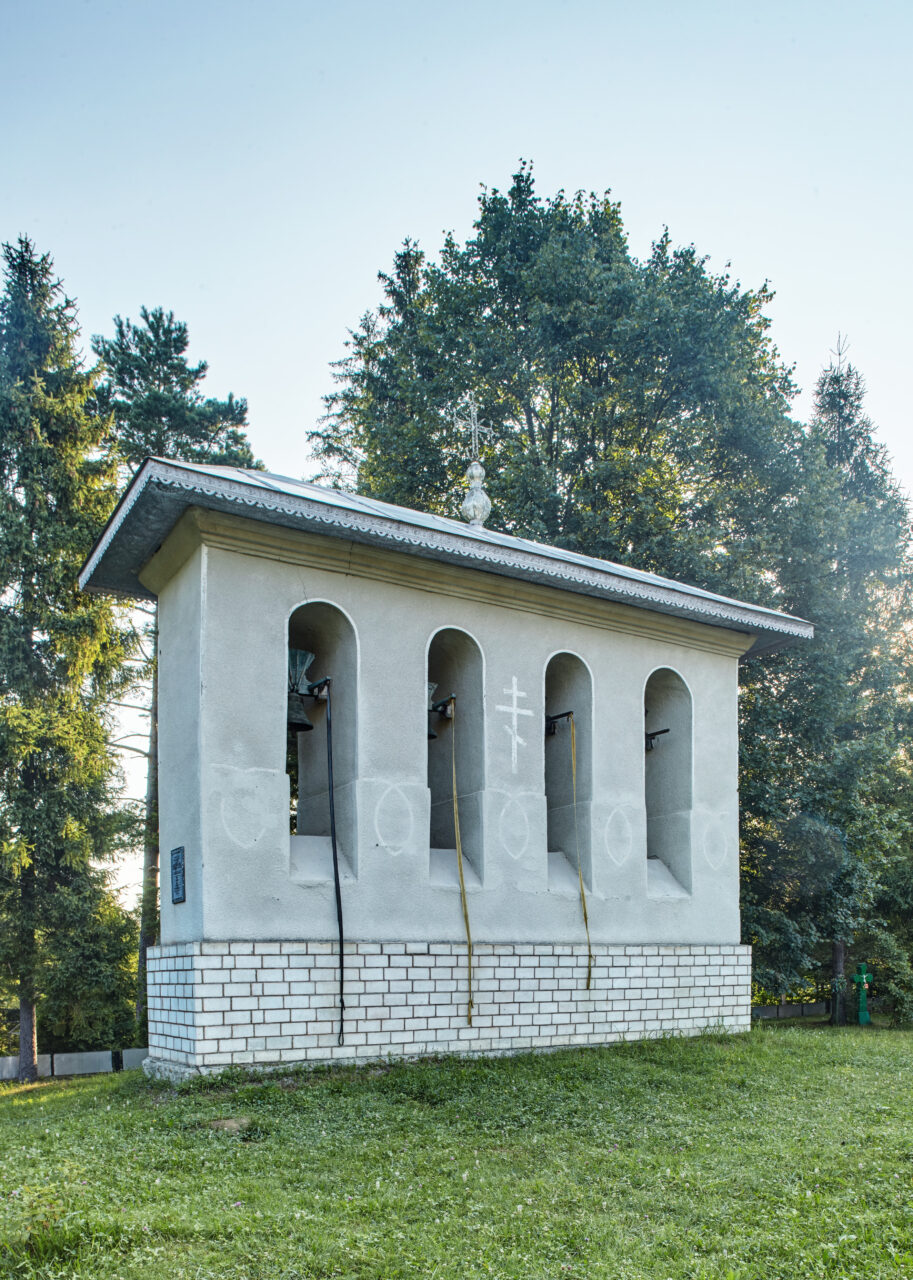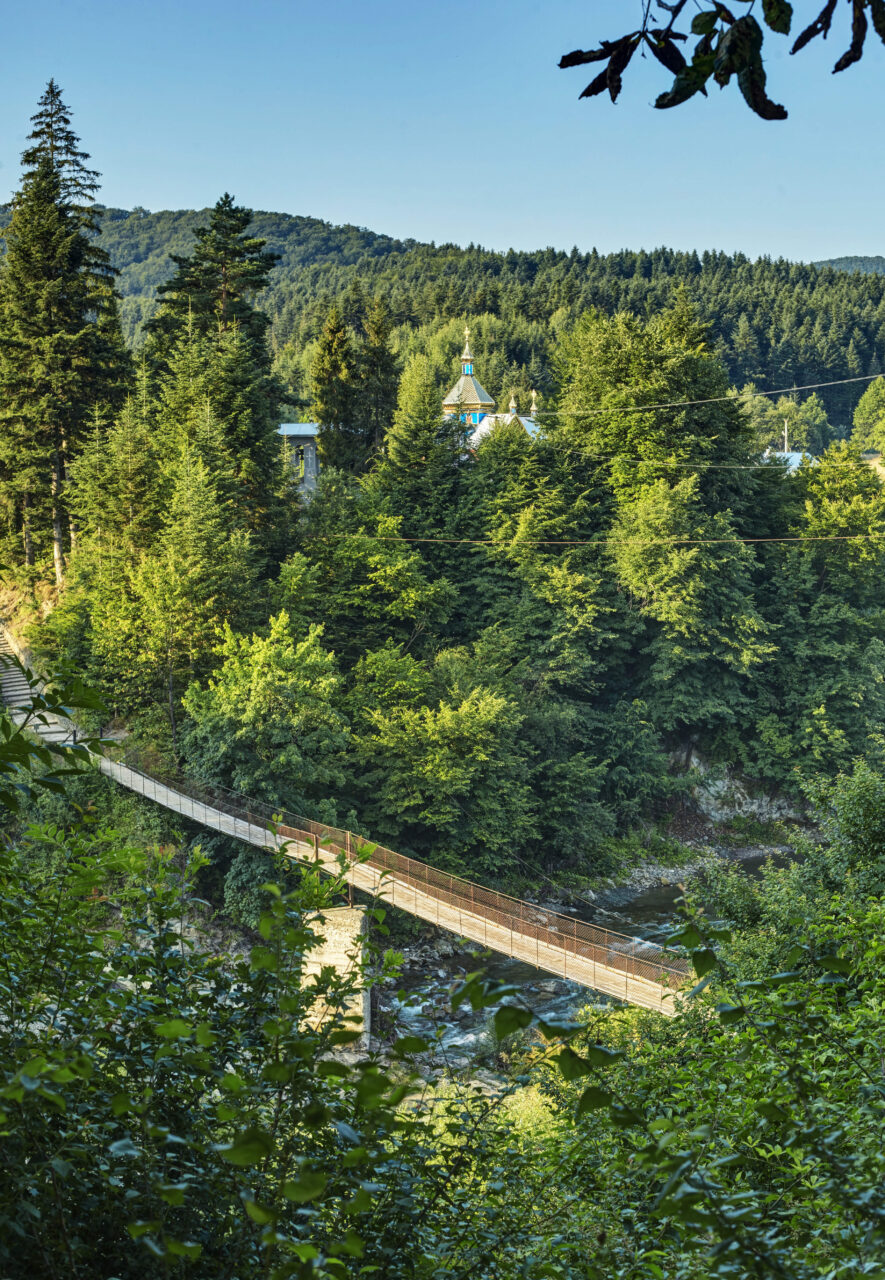The church is wooden, five-log, at the base there is the shape of a cross. The two streams that flow near the temple have a symbolic name for Christians, Jordan, and John the Baptist is believed to be the saint patron of the church.
From generation to generation the locals pass on an interesting legend. It is said that the church was going to be built on the opposite river bank. But during three nights in a row an invisible force carried the construction material to the other side, where the church was eventually built. According to the legend, the first suburban church in Pistyn was built next to the mountain in 1600. Instead of it, in 1750, another wooden church was built at the community’s expenses, and in 1868 it was also replaced by a new wooden one. The temple is surrounded by the remains of stone walls, which were built to protect the shrine from Tatar raids. Near the church there is a bell tower of the 18th century, an ancient cemetery and a wooden suspension bridge.
In the church there is St. Barbara’s icon, to which Polish pilgrims come to pray. In 1861 the church was reconstructed and inn 1930s it was covered with tin. Locals believe that this is how they saved their shrine from destruction. During the Soviet times, the church was turned into a museum of ceramics. Since the independent Ukraine revived, the church has been used by the local Orthodox community. It is an architectural monument of national importance.

